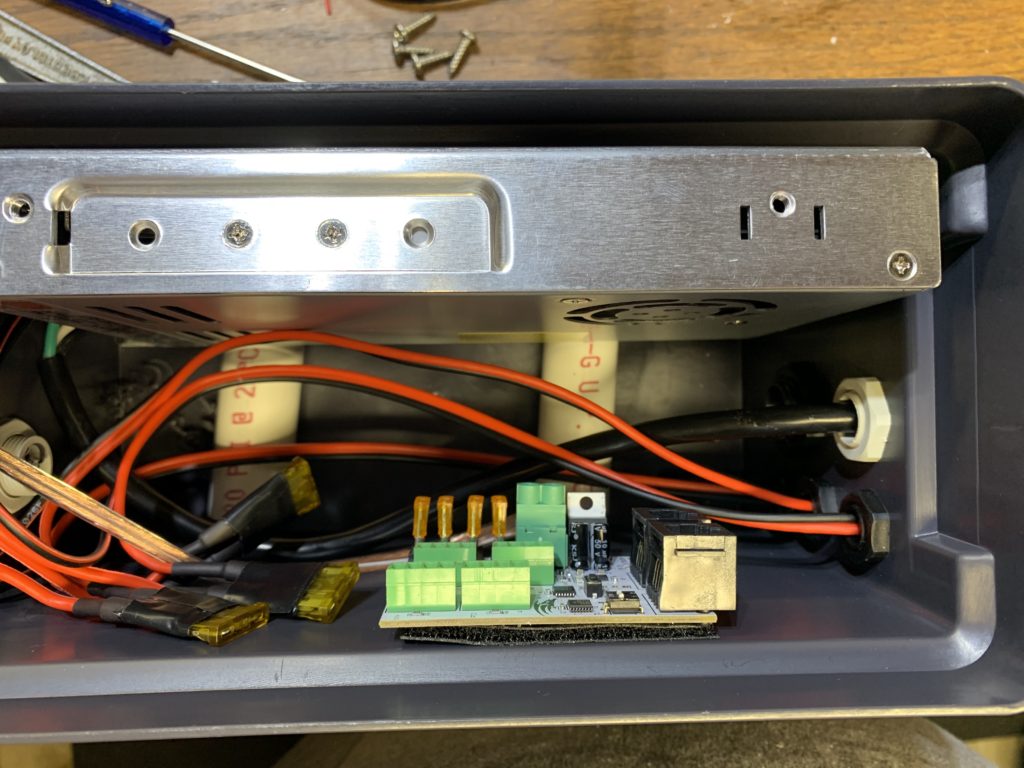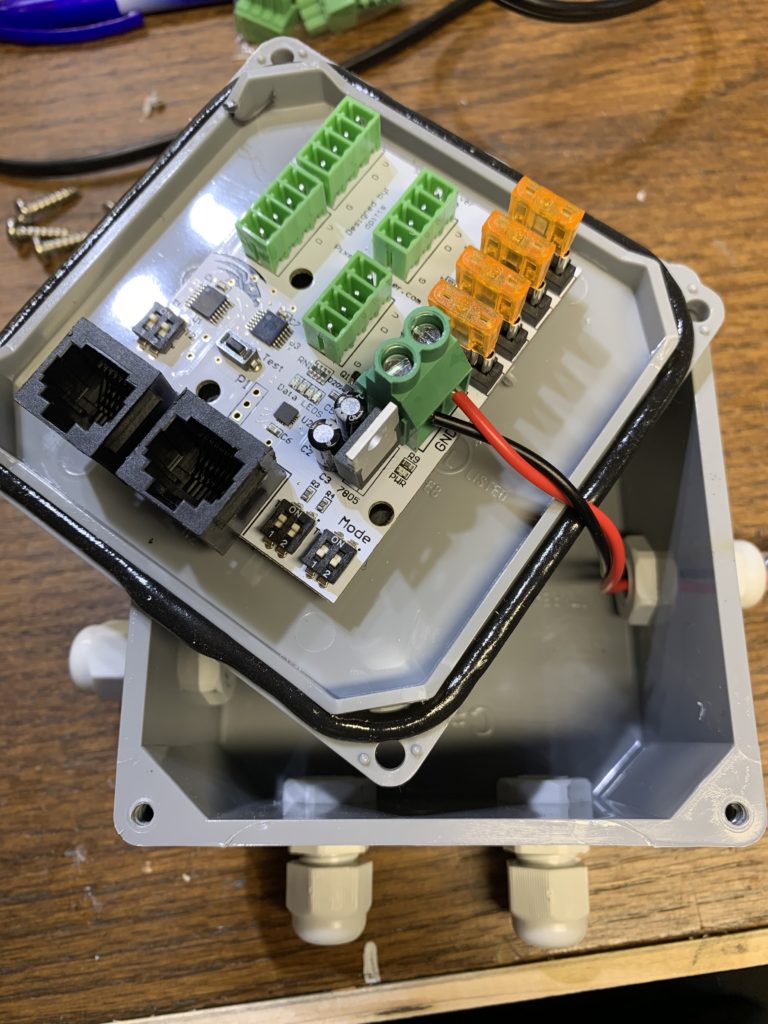
Roofline Update
The weekend before last I posted that we had started working on the rooflines. (It’s happening…)
Well, besides all of the strips being too long, which caused installation and configuration issues, I discovered that WiFi was woefully inadequate for it. Unfortunately because of my design- I had controllers on both ends of the roof, and was unable to get a strong enough WiFi signal on one side, without it being too weak on the other. Just too much “house” to go through, regardless of where I put the WiFi antenna. It doesn’t help that we have very-thick plaster walls and ceilings. I may have been able to make it work if I installed it in the attic- but I’m not slogging through (and ruining) 3′ of insulation to find out.
So, this past weekend I ended up setting up Smart Differential Receivers in new PSU boxes, and set up the roof with wired control from the Kulp control board. I’ll post more about the whole setup later.

I ended up using three Falcon Smart Differential Receivers due to the locations of the start of each string, and my mix of 5v and 12v strings. Receiver “A” runs the right gable end and front, along with the carport roof. “B” runs the left gable end and front, and “C” runs the roof peak. For a total of 4 channels on one diff. port.
The good thing is I was able to cut off the old NodeMCU controllers and excess pixels on the front and back ends of the strings. I still have a section of pixels I need to cut and solder in one of the left front corners, which I’ll hopefully get done when it stops raining here. At least once that’s done- I don’t have to set up a bunch of dead pixels in xLights. Still- it was time consuming and not much fun- it was sprinkling rain and it’s Fall- so leaves and acorns were falling fast. I was mostly concerned about getting electrocuted or burned by the heat gun I was using for the solder-seal connectors.
I learned one important thing in testing Sunday night:
If you have E1.31 relays set up to control the power to your pixels, and you forget to exclude those addresses from FPP’s “String Test” functions- strange things WILL happen!
The power kept cutting out to the PSUs/Lights for a few seconds at a time as the test sequence ran. The funny thing is the 12v string was the only one that actually turned off. The 5v PSUs seem to have large enough capacitors in them that they were back online before the pixels actually shut off. This actually drove me even crazier trying to figure out the problem- since I figured they would ALL go off if it was a power issue. One of the 5v strands did flicker a bit, but didn’t actually shut off.
Another problem was I had previously programmed in “null pixels” to accommodate some of the excess pixels we ended up with. Those were still programmed in even though I cut the excess off- so some sections were off that should have been on. Fortunately it took me almost no time to figure that one out. 🙂
While it made the most sense to put the Smart Differential Receivers in with the PSUs, I did come up with a good way of mounting one stand-alone. Some have said these “waterproof” junction boxes tend to leak a bit, so I decided to fasten it to the lid, instead of the bottom. This also gives a better look at the control board itself, and makes it easier to wire up. My plan is to use this setup in the yard for props too far away from the controller for regular signaling.

That’s it for now. I’ll post more complete details as we get more stuff set up. This was sort-of an emergency project as I hadn’t planned to hardwire data for the roof strings this year. Fortunately I had planned ahead and already ordered the receivers. 🙂
